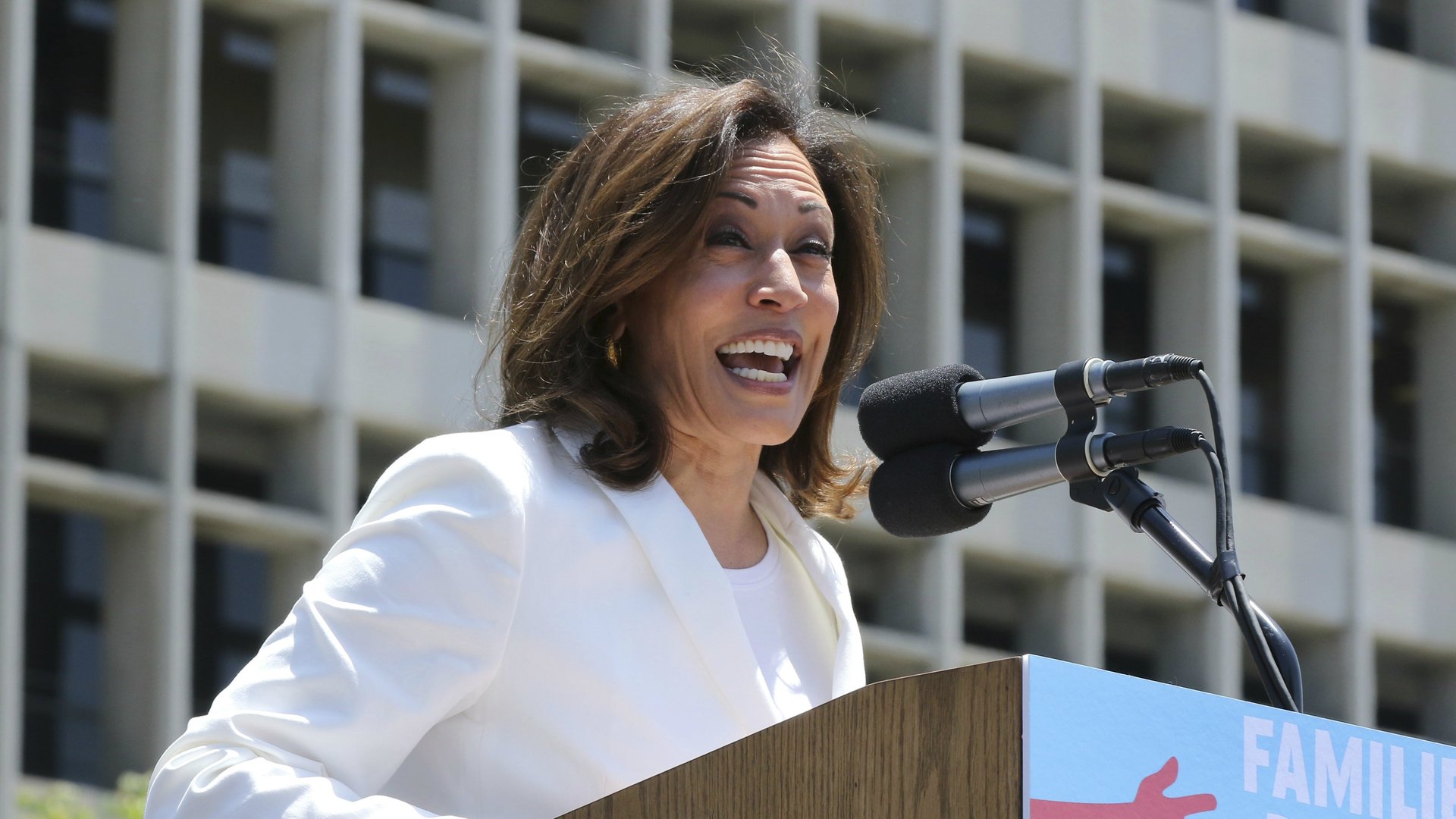Kamala Harris wants US renters to get a tax break. Is it a good idea?
The US has a housing affordability problem. Of the nearly 43 million households that rent their homes, almost two fifths spend over 30% of their income on housing, and about 17% pay more than half (pdf). Rental costs are rising faster than household incomes, and taking up an increasing part of people’s paychecks. Low-income households in the largest Americans cities are facing the toughest crunch—52% of the average janitor’s income goes to housing in New York, versus only 21% of a lawyer’s pay.


The US has a housing affordability problem. Of the nearly 43 million households that rent their homes, almost two fifths spend over 30% of their income on housing, and about 17% pay more than half (pdf). Rental costs are rising faster than household incomes, and taking up an increasing part of people’s paychecks. Low-income households in the largest Americans cities are facing the toughest crunch—52% of the average janitor’s income goes to housing in New York, versus only 21% of a lawyer’s pay.
So what to do?
California senator Kamala Harris, currently the slight favorite to take on Donald Trump in the 2020 presidential election, has an idea. Along with three other Democrats, Harris has proposed the Rent Relief Act, a bill that would put a ton of money back into the hands of low-income renters, and some middle-class ones.
Here is how it works: If you make less than $100,000 (or $125,000 in certain more-expensive areas), pay more than 30% of your pre-tax income on rent, and live in an apartment that costs less than 150% of the typical place in your area, you would get some money back when you pay your taxes. How much you get back would be dependent on your income:
Consider a family living in Chicago with household income of $60,000. Thirty percent of their income is $1,500 a month, so if that family spent $2,000 in rent on a two-bedroom apartment, they would be paying $500 a month above the 30% threshold. At their income level, they would get half of that money back in a tax credit of $3,000 ($250 times 12 months).
Would this policy be a good idea?
Probably not—at least not without some work.
The good part of the bill is that it puts money back into the wallets of the poor, and gives them more stability. A big rent hike would be much less likely to force them out of their apartment or their neighborhood.
Current US tax law is skewed towards benefiting homeowners, and this bill would help balance the scale. Homeowners got subsidies of over $140 billion (pdf) in 2017 that went mostly to those with high incomes. Renters received less than $60 billion. The University of California Berkeley’s Terner Center for Housing Innovations estimated that a bill similar to the Rent Relief Act would cost around $76 billion.
The clearest downside is that it creates bad incentives for renters and landlords. If you already pay more 30% of your income in rent and make less than $25,000, the bill would make you completely indifferent to paying more. If your landlord offered to give you free TV for increasing your rent by $400 a month, you would have every reason to agree because you would get all the money back anyway. It’s not just those who make less than $25,000—anyone who qualifies for the credit would be getting a housing subsidy that would make them want to put more of their income towards housing. The bill could be adjusted to reduce any perverse incentives. Perhaps the benefits could be reduced further from 30% for rental spending, giving households more reason to keep their costs down.
Another big problem with the policy is that it does not address the supply of housing, one of the fundamental issues that makes affordability a problem. Many researchers believe stricter land-use regulations have made building new housing challenging. A study by University of Chicago and Harvard University economists found that housing costs grew far faster in states with more residential building regulations. Vox’s Matthew Yglesias smartly suggests that the Rent Relief Act might be more effective if it was only given to cities that make their land use regulations less onerous.
What might be a better approach
If the federal government wants to help out struggling low-income Americans, it would probably do better by expanding proven policies, rather than trying out a new one.
The money dedicated to a Rent Relief Act could be used to expand the popular and highly effective Earned Income Tax Credit given to low- and middle-income workers. Assessments of that tax credit show that it encourages more people to find jobs and keeps millions out of poverty. In 2017, 27 million households received the credit, with an average amount of $2,445. The money from an increased earned-income credit could be used on housing, if that’s what a family decided was best for them.
If Harris and her colleagues specifically want to take on housing, there are already several programs that could use increased funding. The Low-Income Housing Tax Credit, for instance, has shown to be an effective way to get private developers to build inexpensive housing (pdf). It costs only $9 billion a year, and could surely use any extra money.
With the Democrats out of power in Washington, the Rent Relief Act stands no chance of becoming law in the short term. Given its ambition and expense, it may only ever have a shot to be passed in a much-reduced form. Still, it is interesting as a statement from Harris of where her possible candidacy and the Democratic party are headed. A focus on housing costs should be appealing to struggling, urban families—a group Harris will need to win over if she wants to get the nomination.